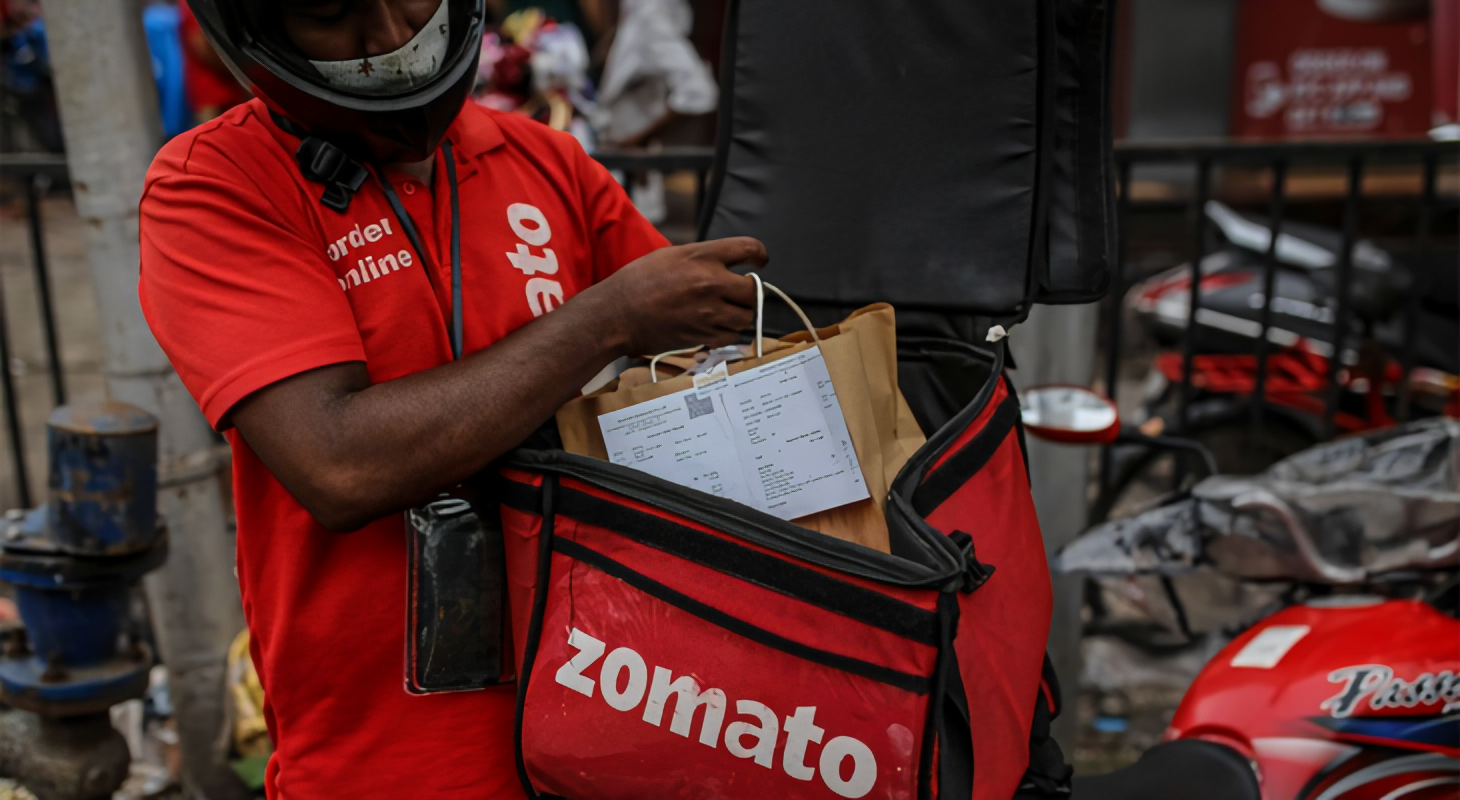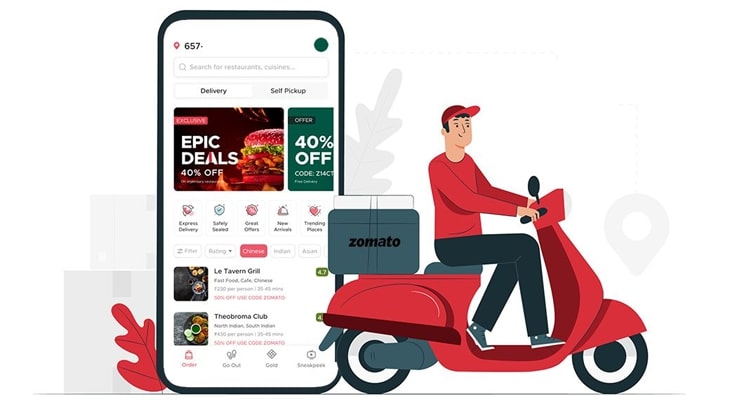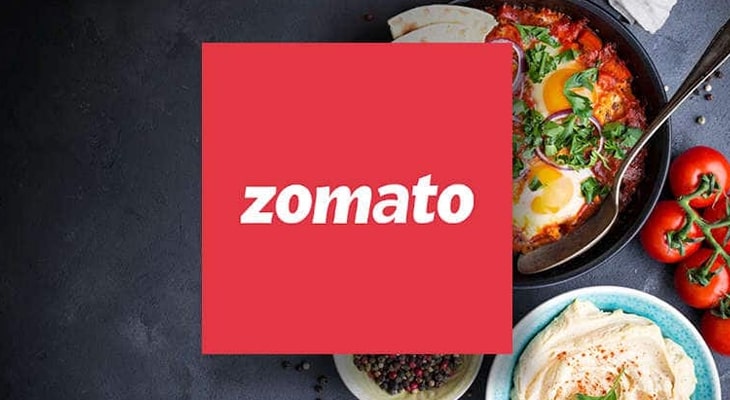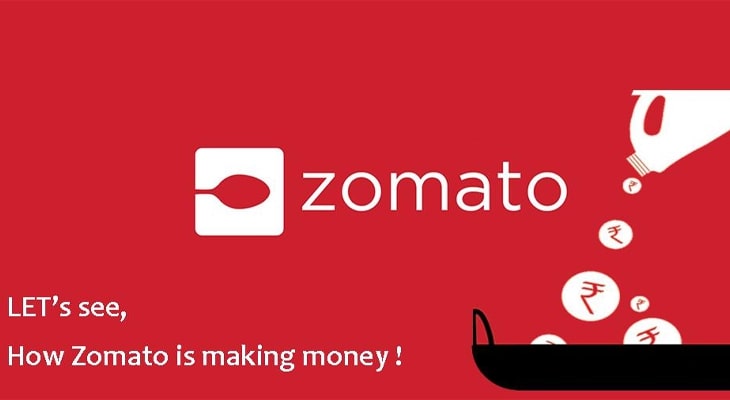
“Check the ratings on Zomato?’’
If only you had a dollar for asking the question and your mere life would have become an even bigger revenue model for you but hard things come the hard way and so is how Zomato earns money. Pretty much a household name now in India when it comes to ordering food online, it was founded in 2008 under the name ‘Foodiebay’ which was changed to its present name in the year 2010. Currently available in twenty-four countries and ten languages, Zomato’s valuation stood at a whopping $14 Billion on the day of its listing which was much higher than the pre-IPO valuation of $8.6 Billion. (source: Company and Brokerage reports)

A technically developed online food ordering system like Zomato has changed the restaurants’ culture drastically and has brought customers into a new comfort zone across the globe. Like other industries, the internet and technology have a great impact on the growth and visibility of the restaurants around us. The food delivery market accounts for 4 percent of all food items sold in restaurant chains and fast-food outlets worldwide. It was estimated that the 5-year growth rate for this market would be 3.5 percent across many countries (McKinsey, 2016). The picture is not so different in our country as well. Traditionally, customers order food online through the websites of restaurants, or fast-food chains, however, this has now been replaced by the concept of ‘aggregator business models’. Business players perform this role by providing the customers with a “single window system” by allowing them to order food online via the portal from a variety of different food providers. In exchange for a fixed margin, the ‘aggregator’ would be charged by the food provider and would then deliver the food item to the doorstep of the consumer. The current focus has shifted to logistics, which is playing a larger role than technology as the major cost driver for the food industry. Despite escalating travelling and vehicle maintenance costs, these food delivery companies make profits of up to 30% (Mckinsey, 2016).

To enhance the visibility and the presence of a restaurant, the restaurant needs to work on the marketing and the online delivery mechanism which require large one-time and continuous periodical investments which might not be feasible for small and new outlets. Companies like Zomato come to the rescue of these restaurants with their tried and tested business model which gives a platform to the restaurant owners and makes it easy for them to go online for delivery of their food without having to worry about the tedious and expensive logistical processes.
The Revenue Model of Zomato :

Advertising:
Even though Zomato’s business is primarily an aggregator of restaurants, it makes most of its revenue through advertising. Zomato gives restaurants, eateries, bars, and pubs a chance to advertise on its platforms through sponsored listings, and earns the greater part of its revenue through this channel. It started as a simple listing platform and restaurant directory. Zomato now promotes restaurants’ products and services via partnerships with restaurants. To be prominently displayed on Zomato’s feed, restaurants are charged a commission.
Similarly, restaurants can also pay Zomato for services such as promotions of their events and banners, which will increase visibility for users on Zomato.
Delivery:
Delivery of food to the customers is another source of income for Zomato where it charges a small commission from the restaurant owners in exchange for providing its delivery and online order placing services.
Zomato Subscriptions:
It also offers the customers the option of subscribing to its monthly gold membership through which they can avail premium and personalized services like complimentary food items from the restaurants. It is also to be noted here that it is not only the customers which pay Zomato for the subscription but also the restaurants who get the service of being on Zomato’s premium list for the customers. Zomato Gold was launched by the company in 2018 and has been a fairly successful initiative.
Data analytics and Consultancy:
The fact that Zomato has an access to what the customers order and thus their preferences depending upon the location and timings, they can easily analyze the trends and help the restaurant owners to analyze the demands for food items in particular locations and thus plan accordingly. Zomato charges the restaurants good money for the same and thus adds to its revenue.

Bookings for dine-in and Events:
Zomato not only offers the customers the option of ordering the food online but also to book the tables for dining in and as it does for all its other services, charges an amount as a commission for the same for providing its services.
Zomato has also started organizing events like food festivals by collaborating with restaurants and thus also makes money out of the ticket sales it makes.
Read Success Story Of Grofers Here








